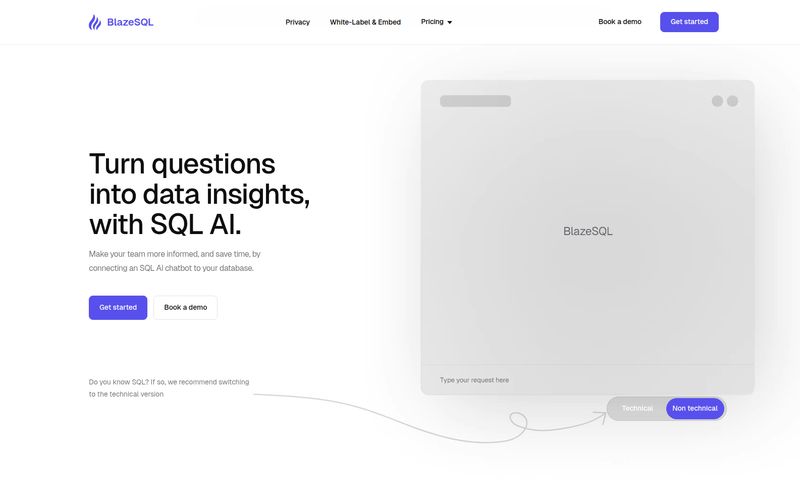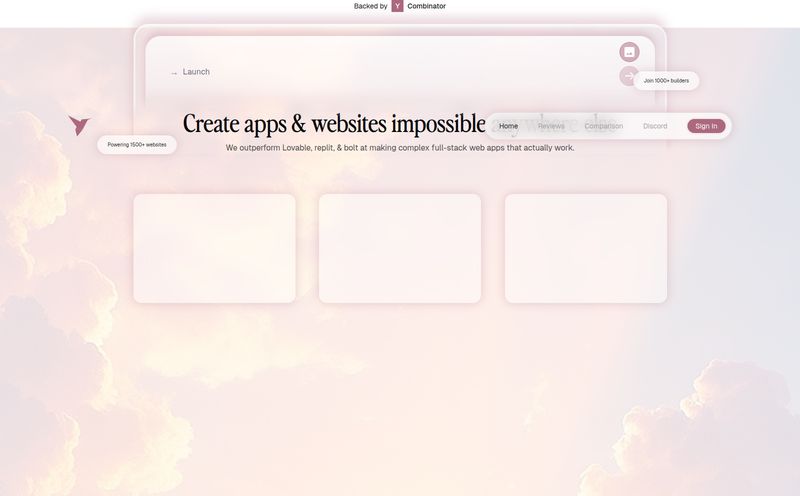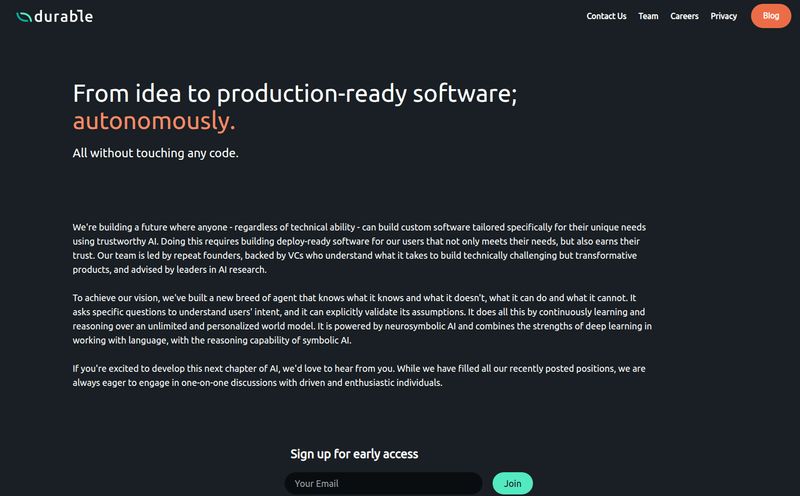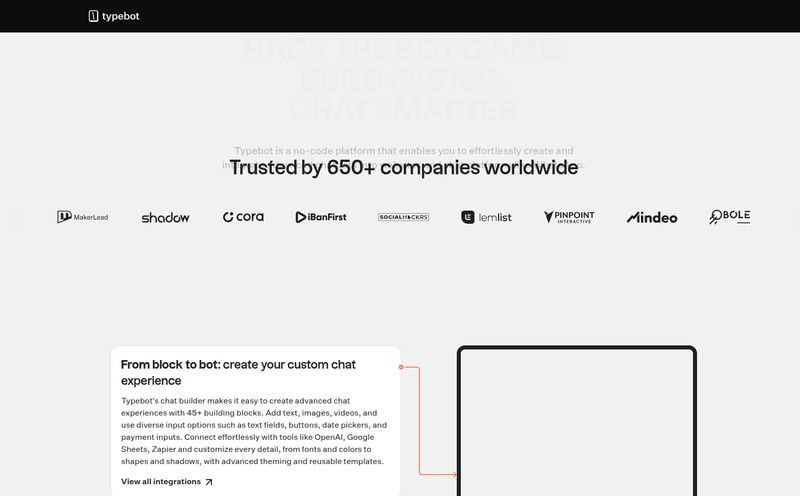How many of us have a folder on our desktop brimming with brilliant app ideas, beautifully designed in Figma, but gathering digital dust? I know I do. You have the vision, the user flow is perfect, the UI is slick... but then you hit the wall. The coding wall. The one that usually requires a fat budget for developers or a six-month sabbatical to learn Swift and Kotlin yourself.
For years, this was the great divide. Designers design, developers develop. But the ground has been shifting under our feet. The no-code movement isn't just a buzzword anymore; it’s a full-blown revolution. And right in the thick of it is a tool that has genuinely caught my eye: Bravo Studio.
I’ve been in the SEO and traffic game for years, and I’ve seen countless platforms promise to turn your dreams into reality. Most of them are... okay. They often feel clunky, restrictive, or produce something that looks more like a glorified website than a real, native app. Bravo feels different. Let’s get into why.
So What in the World is Bravo Studio?
Think of Bravo Studio as a magical bridge. On one side of the canyon, you have Figma, the undisputed king of UI/UX design right now. On the other side, you have the Apple App Store and Google Play, waiting for your native app. Bravo is the tool that lets you walk your Figma designs right across that canyon, turning them into a fully functional app without you having to write a single line of code.
It works through a clever little Figma plugin called the Bravorizer. You’re not exporting images or specs; you’re adding functionality directly to your design components. It's an approach that is so incredibly designer-first, it almost feels like cheating.
The Magic Behind the Curtain and How It Works
Okay, “magic” is a fun word, but we're professionals here. We want to know how the sausage is made, right? The process is surprisingly straightforward, which is its biggest strength.
It All Starts in Figma
This is the best part for designers. You don’t have to learn a new, awkward interface. You stay in your happy place: Figma. You design your app exactly as you normally would, from the splash screen to the settings menu. All your layers, auto-layouts, and components are your building blocks.
Bravo Tags are Your Superpower
Here's where the 'Bravorizing' happens. Using specific text tags in the names of your Figma layers, you tell Bravo what each element should do. For example, a frame tagged [container] will act as a scrollable area. A button layer with an action tag will navigate to another screen. It’s a bit like learning a new language, but instead of complex grammar, it’s just a set of intuitive commands. It takes a little getting used to, I'll admit, but once it clicks, you feel like you have superpowers.
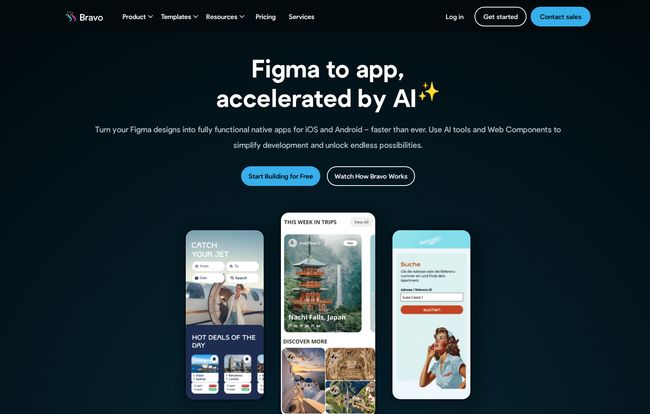
Visit Bravo Studio
Connecting to Real Data
This is what separates Bravo from a simple prototyping tool. An app isn't just pretty screens; it has a soul, and that soul is its data. Bravo lets you connect your app to any third-party API. Want to build a recipe app using a public recipe API? Done. Want to connect to your own custom backend via Airtable or a REST API? You can do that too. This means your app can have dynamic, real-time content, user logins, and so much more. It makes the whole thing real.
What I Genuinely Like About Bravo Studio
I’ve spent a good amount of time poking around in Bravo, and a few things really stand out. The speed from concept to a testable product is just insane. You can have an idea in the morning and be testing it on your actual phone in the afternoon using their Bravo Vision preview app. That kind of rapid iteration used to be a fantasy.
The design flexibility is another huge win. Because you're designing in Figma, you're not constrained by the templates and block builders of other platforms. If you can design it in Figma, you can pretty much build it in Bravo. And the fact that it creates true native apps—not just web wrappers—means you get better performance and access to native phone features. It just feels better to the end user, and in the world of mobile, feel is everything.
Let's Be Real for a Second
Now, it's not all sunshine and rainbows. No tool is perfect, and it would be dishonest to pretend otherwise. My biggest gripe? The pricing model. The core service is reasonably priced, but many of the features you'd consider essential for a serious business app are locked behind pricey add-ons. Want to remove the “Made with Bravo” branding? That’s in the Advanced App add-on, which costs a pretty penny. Want in-app purchases or Admob integration? That's another tier up.
Also, its greatest strength is also a potential weakness: its deep reliance on Figma. If you're an Adobe XD or Sketch devotee, you're out of luck. This is a tool for the Figma crowd, period. And while Bravo itself is its own company, it’s important to remember it’s not officially affiliated with Figma, just built to work with it.
Decoding the Bravo Studio Pricing Plans
Navigating pricing pages can feel like trying to read a legal document. So let me break down Bravo's pricing into plain English. (Note: Prices are as of this writing and may change, so always check their official page for the latest.)
| Plan | Price (approx.) | Who It's For |
|---|---|---|
| Bravo Starter | Free | Hobbyists and anyone wanting to test the platform. Limited to 15 screens per project. |
| Bravo Solo | €19/month | Freelancers and individuals building their own apps. Up to 30 screens. |
| Bravo Team | €40/month | Small teams and agencies needing collaboration features. Up to 50 screens. |
| Advanced/Business Add-ons | +€97 to +€215/month | Serious businesses needing to remove branding, monetize, use advanced analytics, etc. |
My take? The free plan is genuinely useful for learning the ropes. But for any real project, you'll be looking at the Solo plan plus, most likely, one of the add-ons.
So, Who is This Really For?
After playing around, I have a pretty clear picture of who would get the most out of Bravo Studio.
- The Designer-Founder: If you're a designer with a startup idea but no technical co-founder yet, this is your MVP machine. It lets you build a functional product to test your market and get initial traction.
- Freelancers and Agencies: This can be an incredibly powerful tool for offering app development as a service without needing a full-time dev team on payroll. You can build and deliver beautiful, data-driven apps for clients much faster.
- The Lean Startup: Need to get an app to market... yesterday? The speed of Bravo is its killer feature. Forget long development cycles; you can go from design to deployment in a fraction of the time.
It's probably not the right fit if you're building the next Fortnite or a highly complex, computationally intensive application. But for a massive range of apps—from social networks and booking platforms to content libraries and community apps—it’s a formidable contender.
Final Thoughts
Bravo Studio is more than just a cool toy. It’s a serious tool that represents a fundamental shift in how we can create digital products. It empowers designers to become creators in the truest sense, taking their vision from a static screen to a living, breathing application in a user's hand.
Yes, you need to be in the Figma ecosystem, and yes, the pricing for advanced features can add up. But the power it gives you to build, test, and launch real native apps without code is, for me, a total game-changer. It's one of the most exciting tools I’ve seen in the no-code space, and I can't wait to see what the 200,000+ 'Bravistas' build with it next.
Frequently Asked Questions
- Do I need to know how to code to use Bravo Studio?
- Nope! Not a single line. You do need to be comfortable with Figma and learn the Bravo Tag system, but no traditional programming is required.
- Can I really publish my app to the App Store and Google Play?
- Yes. Bravo helps you generate the actual application package files (.aab for Android and .ipa for iOS) that you then submit to the respective stores. They offer support for this process on their higher-tier plans.
- What's the difference between Bravo and other no-code builders?
- The main difference is its 'design-first' approach using Figma and its ability to create native apps. Many other builders use their own restrictive interfaces or create web-based apps that are packaged for mobile, which can affect performance and access to phone features.
- What kind of data can I connect to my app?
- You can connect to almost any service that has a REST API. This includes popular back-end-as-a-service platforms like Airtable, Xano, and Firebase, or your own custom-built backend.
- Is Bravo Studio really free?
- It has a free starter plan that is great for learning and small projects. However, for publishing a professional app with your own branding, you'll need one of the paid plans and likely an add-on.
- What are Bravo Tags?
- They are special text commands that you add to the names of your layers and frames in Figma. These tags tell Bravo Studio how to convert your design elements into functional, native app components, like scrollable containers, video players, or buttons.
